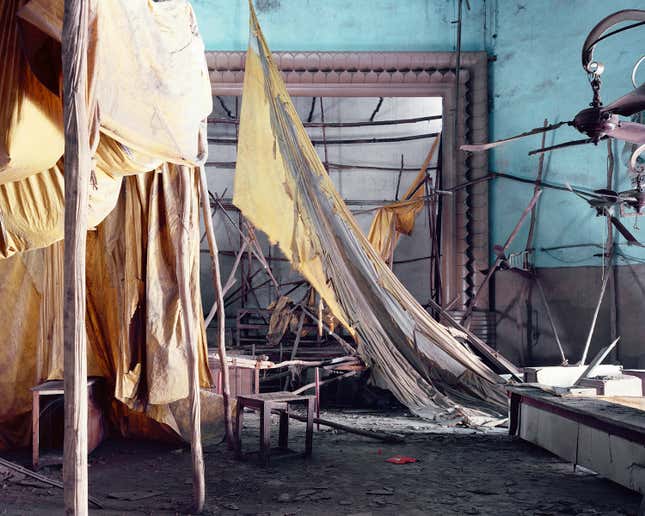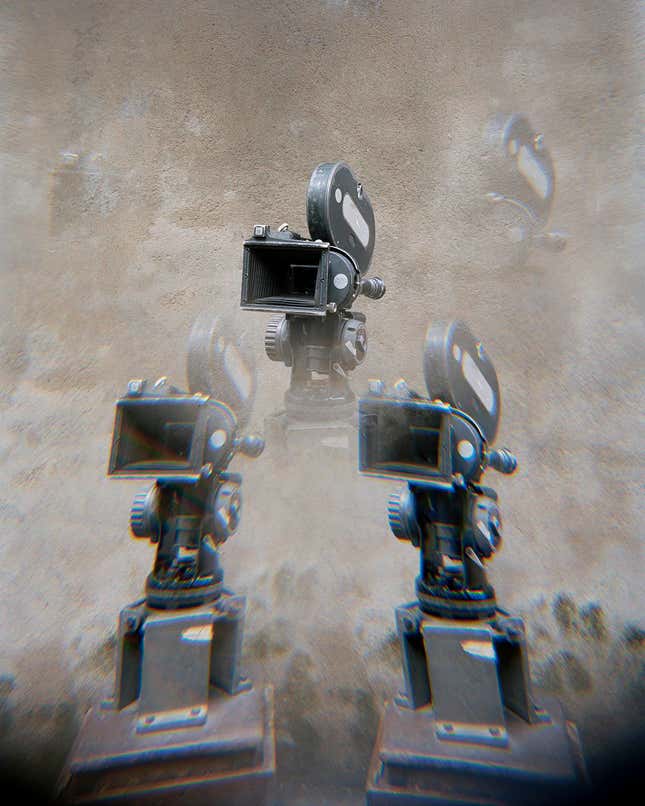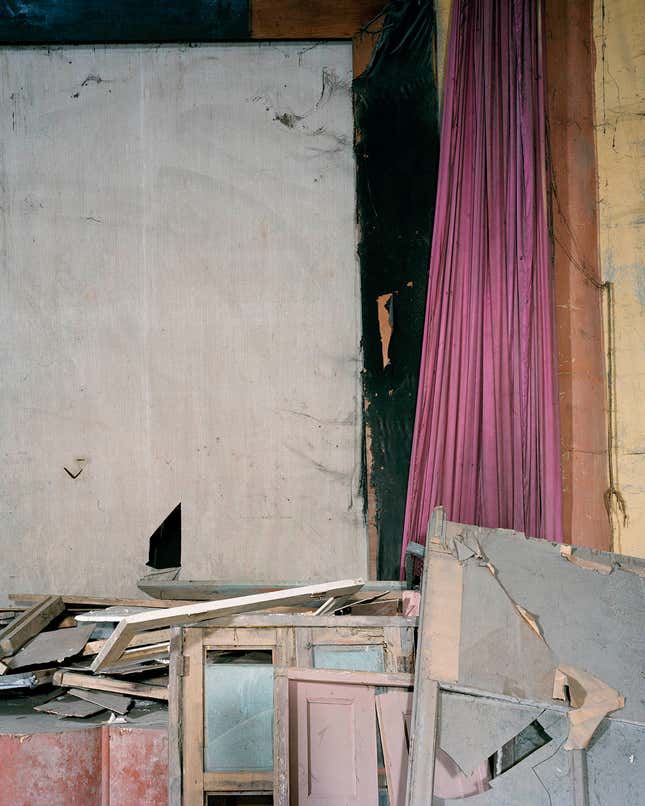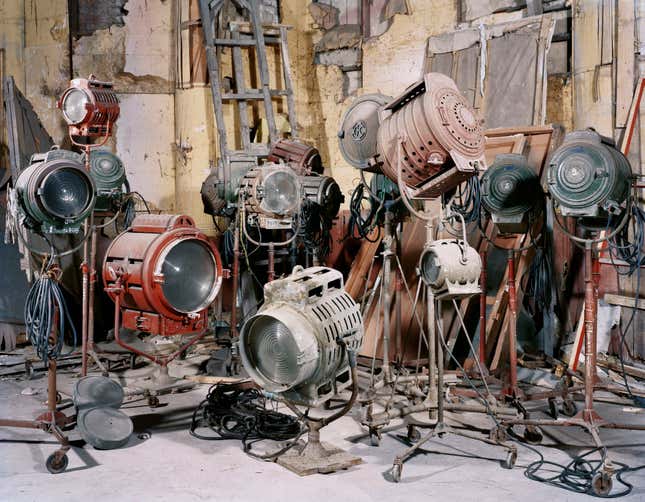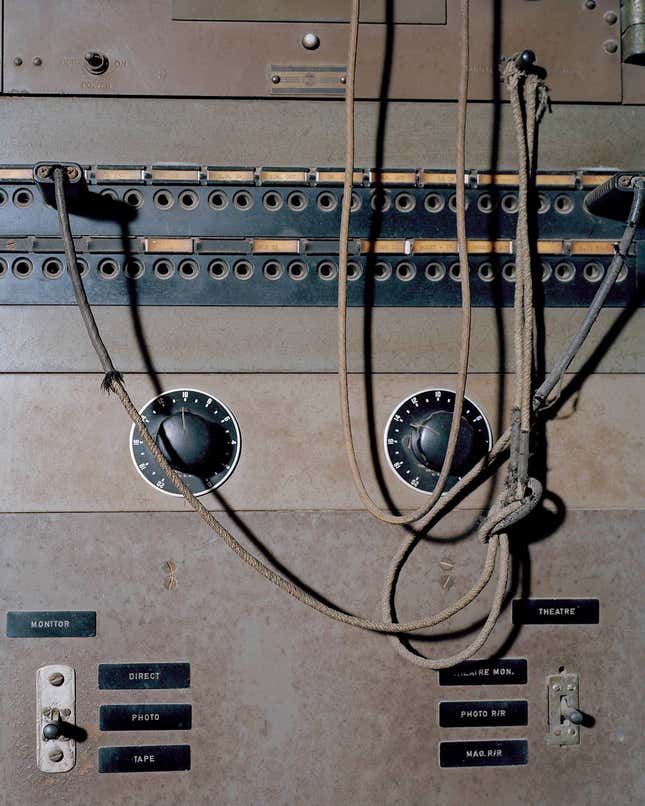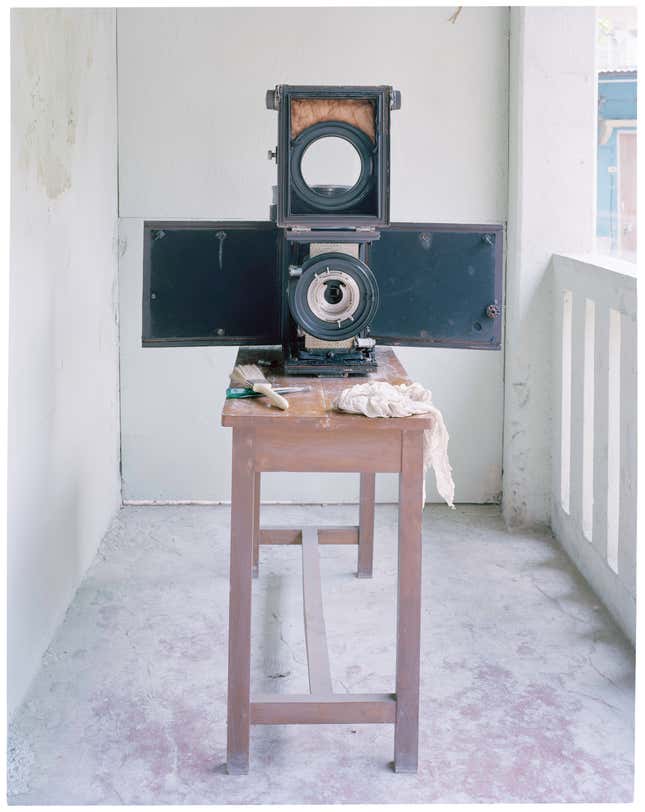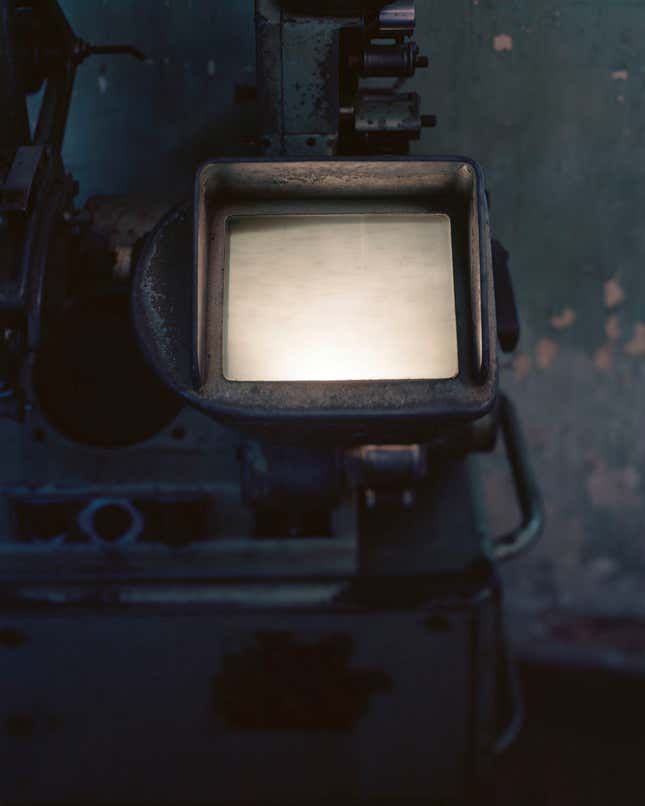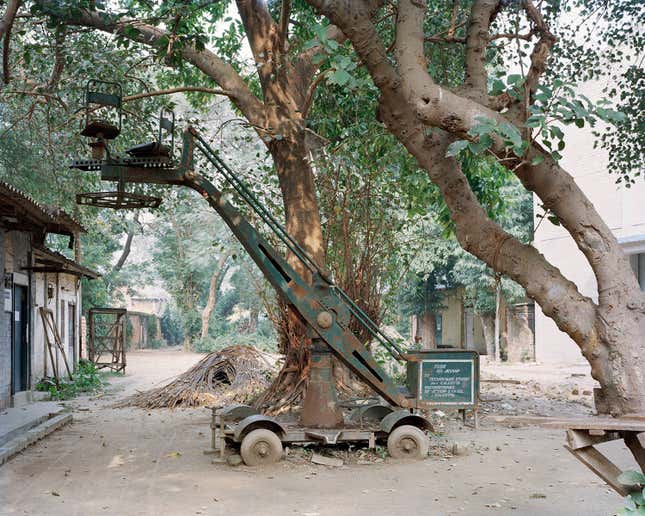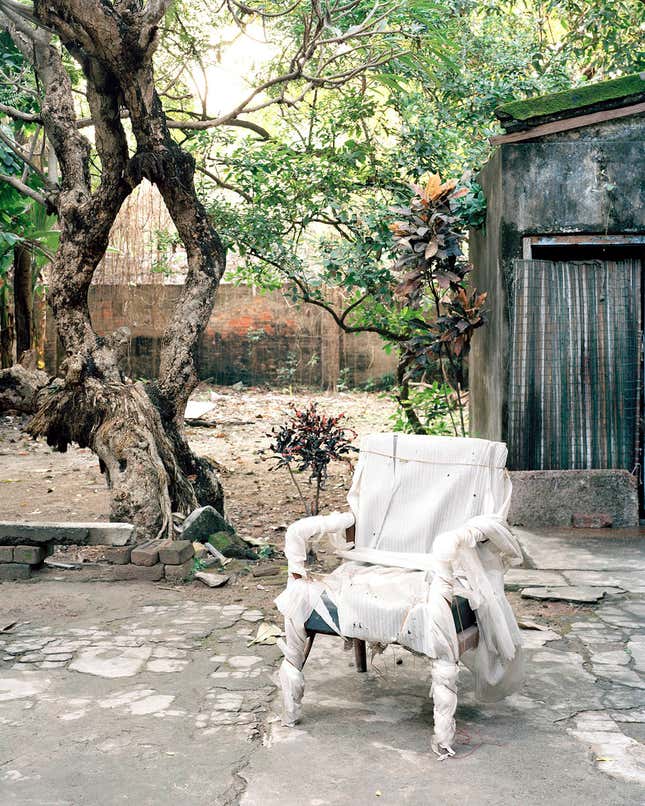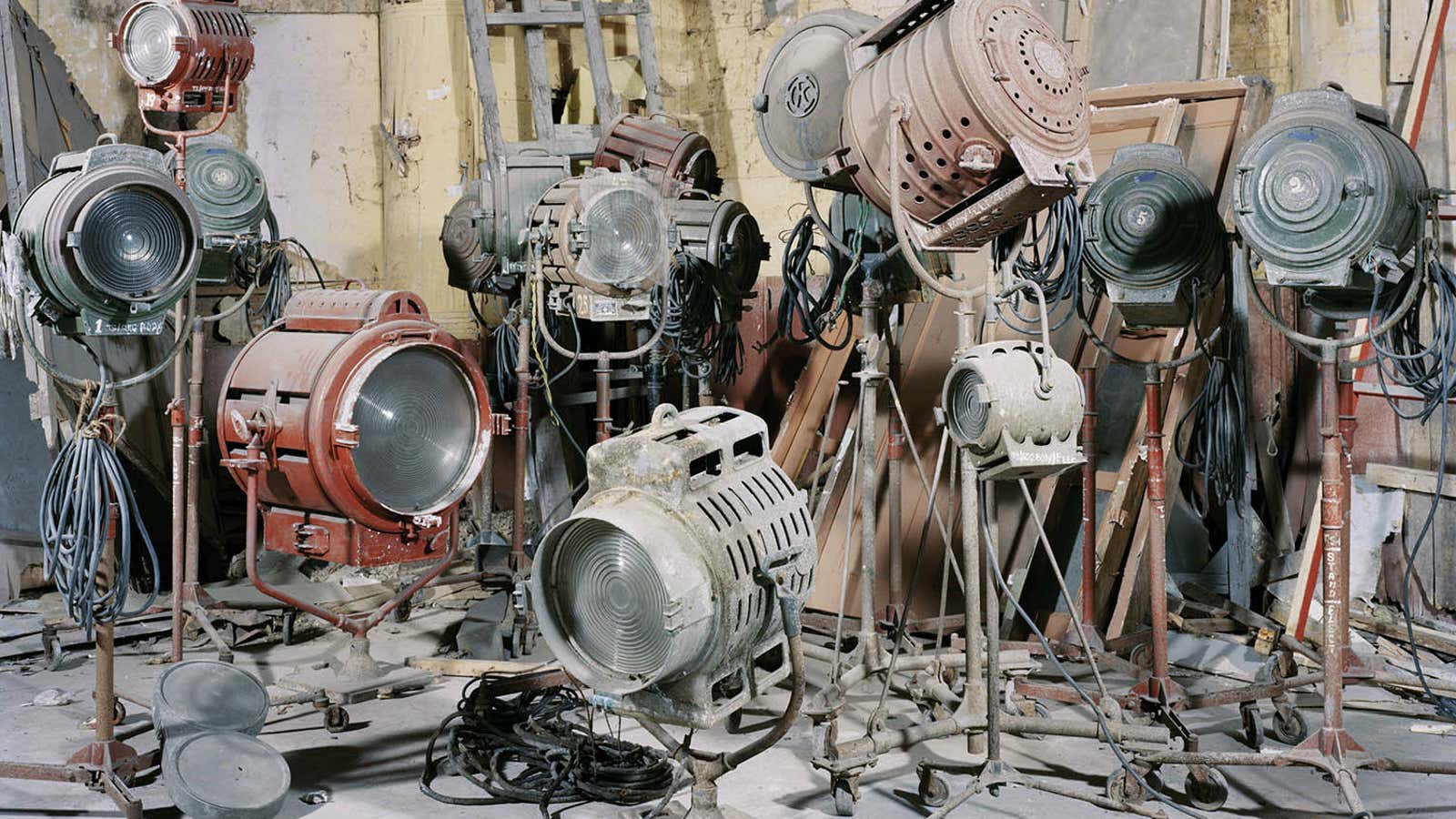In 2013, a few years after she documented India’s disappearing single-screen theatres, photographer Nandita Raman came to Kolkata and stumbled upon countless forgotten pieces of the country’s cinematic past.
From cameras and a chair used by the legendary director Satyajit Ray (known by friends as Manik-da) to sound consoles and projectors, equipment that helped create some of India’s most iconic movies was squirreled away in the back rooms of film studios, often covered in layers of dust.
“If there was a Museum of Moving Images and related history in India, then I would probably find all this equipment in its collection,” Raman told Quartz. “Since there isn’t such an institution, these tools that are now out of circulation and use recede into obscure corners.”
India’s film industry is one of the largest and best-known in the world, but barring the National Film Archive of India and the work of passionate private collectors, little has been done to preserve its history and legacy. So, in an attempt to capture the spirit of India’s cinema industry in the years after Independence, Raman began photographing these objects.
Her poignant series, Do Not Forget Me, is now on display at the sepiaEYE gallery in New York, and it reveals the sorry state of abandoned equipment and forgotten memorabilia in India.
“Some of the studios like Bharat Laksmi make effort towards their upkeep. I remember an employee would wind old film celluloid on a weekly basis in order to air and preserve it,” Raman said. “But it’s a task that needs constant attention, expertise, and funds. In my opinion, this is better accomplished in a museum or archive.”
The Indian government did come up with a plan for a National Museum of Indian Cinema way back in 1997. It was slated to open in a historic mansion in Mumbai in 2014, but the project has faced several delays since then.
Here’s a selection of Raman’s photographs of India’s forgotten film heritage:
